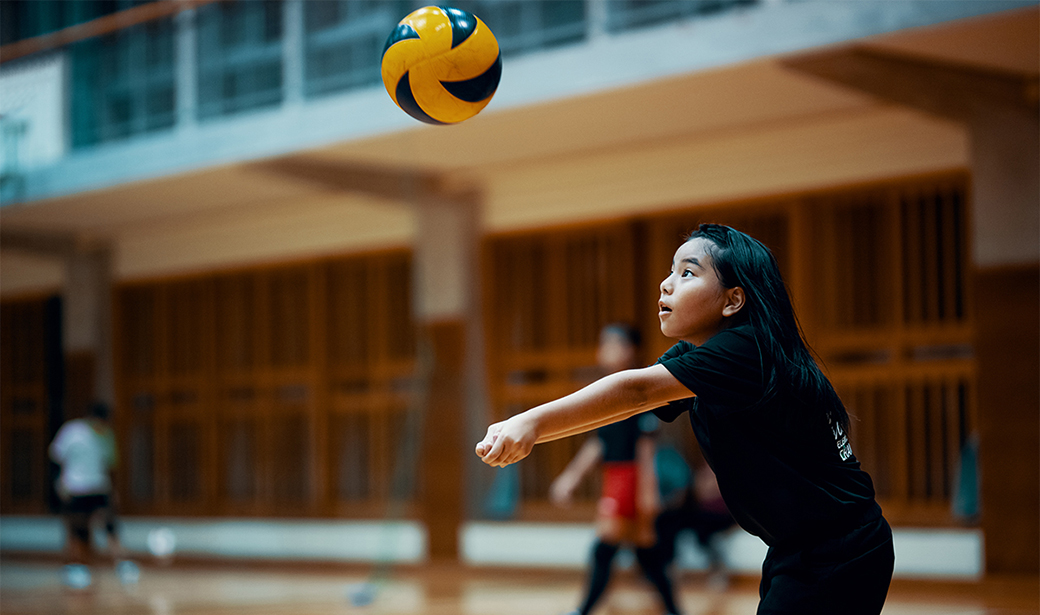When it comes to the surgical treatment of scoliosis in adolescents, posterior spinal fusion (PSF) and vertebral body tethering (VBT) have proven successful in correcting abnormal spinal curvature. Daniel Hoernschemeyer, MD, a pediatric orthopaedic surgeon at MU Health Care, performs both procedures.
Meeting with patients and their families to help them understand the implications of these surgeries is a key step in the process for Dr. Hoernschemeyer. Flexibility, range of motion and return to activity are all important factors for the patient.
“Posterior spinal fusion has been the gold standard for decades, particularly for older adolescents that have advanced scoliosis, and it will absolutely correct those curves,” Hoernschemeyer said. “But if a patient is not skeletally mature and still has flexibility, there’s a chance that VBT can offer a similar outcome with less downtime”
Flexibility and Range of Motion
Scoliosis patients who need intervention in the lumbar spine will lose some degree of spinal flexion and this is an important fact when discussing expectations. The extent of flexibility remaining following surgery depends on which vertebrae are fused, but patients who undergo PSF can expect to lose some of their spinal flexibility when bending forward, particularly if their fusion is in the lumbar spine. Research and patient outcomes tracking at the University of Missouri School of Medicine has shown that patients who receive spinal fusion to their fourth lumbar vertebra lose an average of 40 degrees of forward flexion at the two-year mark postoperatively.
In comparison, VBT patients retain more forward flexion and lumbar motion when treated in the lumbar spine, regardless of distal level. And patients who received VBT down to their L4 vertebra can expect a loss of less than 15 degrees in flexion at two years.
“Looking at PSF versus VBT, flexion and range of motion is one major area where patients can expect a difference in outcomes,” Hoernschemeyer said. “VBT offers a child preservation of anatomy, which is an important factor if they desire a return to activity or sport, particularly at a high level.”
Return to Activity
The timeframe of returning to any activity level is another difference between the two procedures. PSF surgeries are performed in an open setting, take longer in the operating room and may require a longer hospital stay — three to four days — compared to VBT patients who generally return home on the second day after surgery.
Because VBT is a minimally invasive procedure, surgeries can be completed in four to six hours. VBT patients can return to regular activity, including sport, more quickly compared to PSF patients because healing around the screw placements takes less time than developing a fusion mass.
All patients who receive scoliosis surgery should refrain from bending, lifting, twisting or other strenuous activity for at least three months. In general, VBT patients can resume normal activity with no restrictions at this three-month checkpoint, but PSF patients are normally not cleared for unrestricted return to activity for six months.
“Studies have shown patients return to some level of activity 95% of the time following VBT, compared to 60% for PSF,” Hoernschemeyer said. “Our success with VBT patients includes adolescents who were high-level athletes and returned to their same level of activity following VBT.”
Because VBT requires at least two years of future growth for optimal results, the window of opportunity for patients is narrower than PSF. Hoernschemeyer recommends scheduling patients for a consultation with an orthopaedic surgeon as soon as possible if the patient:
- Is between the ages of 8 and 16
- Is bracing as a treatment for scoliosis
- Has a Cobb angle between 35 and 65 degrees
- Has curves less than 30 degrees when bending



